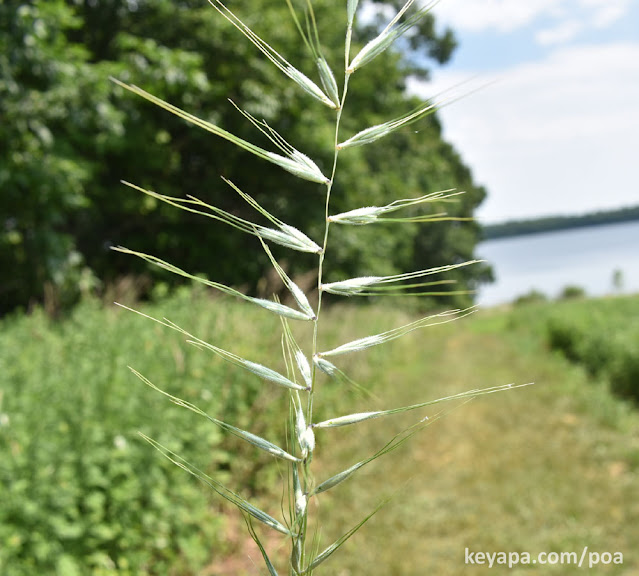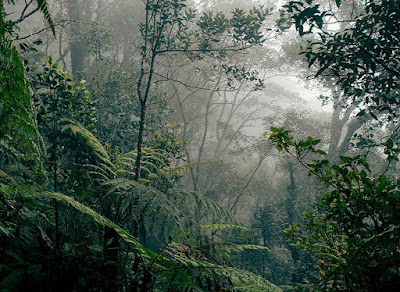However, there has been a recent push by grassland researchers and proponents to combat this perception by pushing the notion of the so-called "Old Growth Grasslands", which is comparable to the traditional "Old Growth Forests".
The term Old Growth Grasslands (OGG) is relatively new, and refers specifically to grasslands that are characterized by having:
- Ancient history and heritage, as opposed to being so-called secondary grasslands that just recently arose from human degraded forest or other land. For example, the plant lineages making up the Cerrado in South America started assembling almost 10 million years ago, long before our species even evolved.
- High biodiversity compared to secondary grasslands. In fact, some old growth grasslands boast the highest plant species diversity in the world.
- Very slow rate of recovery when destroyed due to agriculture, plantation forestry, and other human activities. An Old Growth Grassland may take centuries and even millennia (projected 1400 years!) to recover its former species richness when it has been degraded to secondary grassland.
The term '"Old Growth" is made synonymous with words like ancient, intact, native, natural, pristine, reference, remnant, semi-natural, and undisturbed.
What is the problem?
There is a widespread perception among people that grasslands (including OGG) are simply degraded forests whose successional development has been arrested by disturbances such as fire and herbivory.
Policies to combat climate change and protect biodiversity have often ignored the protection of these ancient grasslands, and in many cases have actually caused their destruction via deliberate tree-planting on pristine grasslands (afforestation)
What is the goal?
We must help change the widespread perception that old growth grasslands are simply degraded forested areas and a mere transitional stage towards becoming forests. This change in viewpoint will hopefully give this ancient biome a value and protection equal to rainforests and other old growth forests.
What is happening to Old Growth Grasslands?
The old growth grasslands have been and are still one of the most threatened ecosystems in the world, and in fact we have lost and are losing ancient grasslands at a pace that is significantly more rapid than loss of forests.
A few examples:
The majority of old growth grasslands in the USA has been lost, and only isolated remnants remain. For example, up to 99% of all Tall Grass Prairies in the country is gone, and only isolated remnants remain. Other grassland types are not faring well either. In one year alone (2018-2019), the Great Plains lost 1.1 million hectares, which is an area greater than Yellowstone National Park.
Half of the Brazilian Cerrado has already been cleared for agriculture expansion, and up to a million hectares is cleared each year. This is the equivalent of wiping out an area the size of New York City every month!
More than half the Pampas of South America have been lost to agriculture and cattle breeding. The remaining 50 million hectares of these grasslands are still being decimated, and are home to 540 recorded wild bird species, 12 of which are globally threatened.
The recent trend of planting trees to combat climate change has also caused widespread problems, when trees (and especially weedy invasive species) are planted in pristine grasslands ("afforestation") instead of degraded areas.
Why must we fight for Old Growth Grasslands?
1. The old growth grasslands are the most biodiverse environments in the world at many scales.
For example, a mountain grassland in Argentina had an absolutely amazing 89 vascular plant species packed into a single square meter, a more diverse plant assemblage than one can see even in rainforests.
Old growth grasslands are also significantly more diverse than secondary grasslands, having around 37% more species on the whole. When this diversity is degraded, it takes centuries or millennia (projected) for the OGG to reassemble as diverse a community.
2. Old growth grasslands provide a home for innumerable species of animals. The destruction of old growth grasslands affects all the animals that depend on this habitat.
For example, the total population of grassland birds in North America has dropped an astonishing 40% since 1966. One-third of all grassland bird species are on the Watch List due to steeply declining populations and threats to habitat. Birds that breed in the Great Plains of Canada and the U.S. and winter in Mexico’s Chihuahuan grasslands are experiencing exceptionally steep declines, a nearly 70% loss since 1970. Other temperate grassland birds have declined by 33% in that time.
Old growth grasslands also support numerous rare and endemic species. For example, the savannas of the South American Cerrado support 4,800 endemic plant and vertebrate species, all of which could be threatened by the continued decimation of this biome.
3. Grasslands play an essential role in combatting climate change.
Grasslands store approximately 34 percent of the global stock of carbon in terrestrial
ecosystems while forests store approximately 39 percent and agroecosystems
approximately 17 percent.
Some studies have shown that grasslands are an even more reliable carbon sink than forests, and although grasses account for only 3% of plant species on Earth, grass-dominated landscapes contribute 33% of global primary productivity, the amount of CO2 removed from the atmosphere every year to fuel photosynthesis.
4. Grasslands collect freshwater for most of the largest rivers of the world.
For example, the Cerrado in Brazil delivers 40% of all the freshwater in that country!
5. Possible conversion to secondary grasslands.
The loss of old growth grasslands due to conversion to human agricultural use or due to misguided attempts at afforestation frequently results in the rise of secondary grasslands in their place. Such secondary grasslands are less diverse and usually very fire prone (which creates new dangers to human communities and forests). For example, one major factor in the recent huge and destructive fires in the West Coast of the USA is the proliferation of invasive annual grasses, which have supplanted the perennial grasses and shrubs after degradation of the land due to over-grazing.
What can you do?
Champion and spread the concept of Ancient or Old Growth Grasslands, which are separate from secondary grasslands, and are equally as old and biodiverse and worthy of protection as Old Growth Forests.
References
Bardgett, R.D., Bullock, J.M., Lavorel, S. et al. Combatting global grassland degradation. Nat Rev Earth Environ 2, 720–735 (2021). https://doi.org/10.1038/s43017-021-00207-2
Beer, C., Reichstein, M., Tomelleri, E., Ciais, P., Jung, M., Carvalhais, N., Rodenbeck, C., Arain, M. A., Baldocchi, D., Bonan, G. B., Bondeau, A., Cescatti, A., Lasslop, G., Lindroth, A., Lomas, M., Luyssaert, S., Margolis, H., Oleson, K. W., Roupsard, O., Veenendaal, E., Viovy, N., Williams, C., Woodward, F. I. & Papale, D. (2010). Terrestrial gross carbon dioxide uptake: global distribution and covariation with climate. Science 329,
834–838
Colli, G.R., Vieira, C.R. & Dianese, J.C. Biodiversity and conservation of the Cerrado: recent advances and old challenges. Biodivers Conserv 29, 1465–1475 (2020). https://doi.org/10.1007/s10531-020-01967-x
Comer, P. J., J. C. Hak, K. Kindscher, E. Muldavin, and J. Singhurst (2018). Continent-Scale Landscape Conservation Design for Temperate Grasslands of the Great Plains and Chihuahuan Desert. Natural Areas Journal 38:196–211.
Dass Pawlok, Benjamin Z Houlton, Yingping Wang, David Warlind. Grasslands may be more reliable carbon sinks than forests in California. Environmental Research Letters, 2018; 13 (7): 074027 DOI: 10.1088/1748-9326/aacb39
Intergovernmental Panel on Climate Change (IPCC), August 2019. The Special Report on Climate Change and Land (SRCCL), a special report on climate change, desertification, land degradation, sustainable land management, food security, and greenhouse gas fluxes in terrestrial ecosystems.
Murray S, M. Rohweder, R. White (2000). Pilot Analysis of Global Ecosystems : Grasslands Ecosystems.
Nerlekar, Ashish & Veldman, Joseph. (2020). High plant diversity and slow assembly of old-growth grasslands. Proceedings of the National Academy of Sciences. 117. 201922266. 10.1073/pnas.1922266117.
Simon Marcelo F., Rosaura Grether, Luciano P. de Queiroz, Cynthia Skema, R. Toby Pennington, Colin E. Hughes (2009). Recent assembly of the Cerrado, a neotropical plant diversity hotspot, by in situ evolution of adaptations to fire. Proceedings of the National Academy of Sciences Dec 2009, 106 (48) 20359-20364; DOI: 10.1073/pnas.0903410106
Veldman, Joseph W. “Clarifying the confusion: old-growth savannahs and tropical ecosystem degradation.” Philosophical transactions of the Royal Society of London. Series B, Biological sciences vol. 371,1703 (2016): 20150306. doi:10.1098/rstb.2015.0306
Wilsey, CB, J Grand, J Wu, N Michel, J Grogan-Brown, B Trusty (2019). North American Grasslands. National Audubon Society, New York, New York, USA
Wilson, J. Bastow; Peet, Robert K.; Dengler, Jürgen; Pärtel, Meelis (1 August 2012). "Plant species richness: the world records". Journal of Vegetation Science. 23 (4): 796–802.
World Wildlife Fun. (2021). PlowPrint Report 2021

























